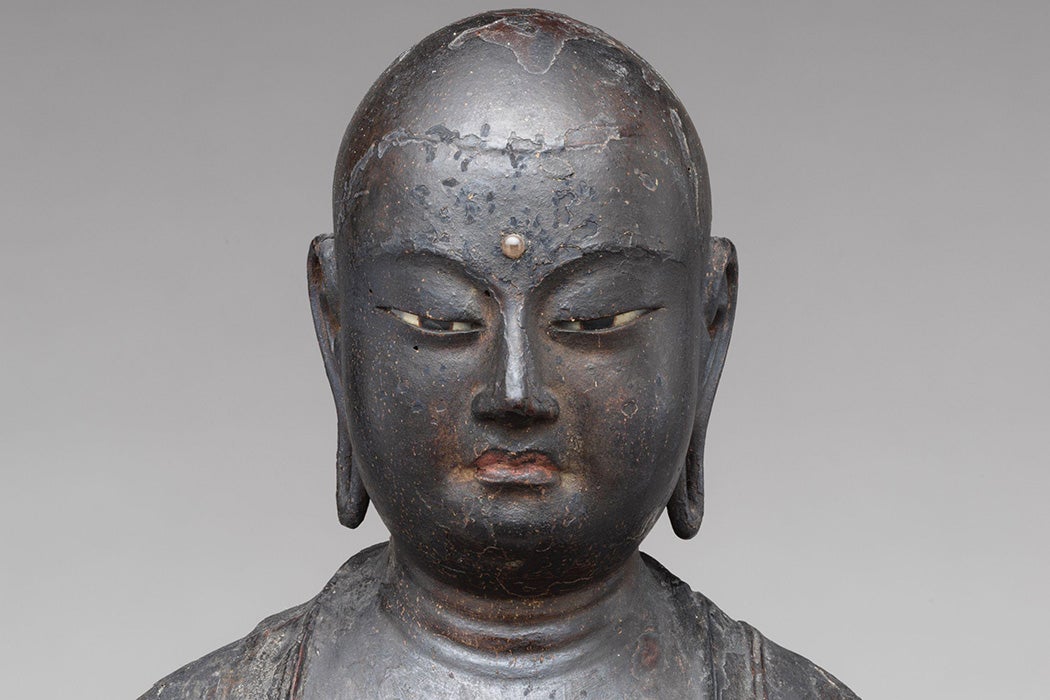In any religion with a pantheon of saints, gods, or bodhisattvas, certain figures gain favor when they serve a particular community’s needs. Religion scholar Milla Micka Moto-Sanchez discusses how this happened regarding Japanese women’s worship of a bodhisattva named Jizō.
Like most Japanese Buddhist traditions, the worship of Jizō has its origins in China, where the bodhisattva was known as Dizāng, the “savior of the damned.” Stories told of his travels to the underworld to save people, particularly women who would otherwise be condemned due to the polluting quality of menstrual blood.
In medieval Japan, Jizō merged with Shinto deities, including fertility gods. Practitioners from various Buddhist traditions, including Pure Land, Shingon, and Zen promoted his worship. Over time, Moto-Sanchez writes, his image transformed from powerful deity to “a friendly and approachable little novice monk with whom anyone could feel at ease.”
Part of Jizō’s association with women comes from a scripture known as the Sutra of Jizō’s Original Vow, also imported from China, which tells of two of his past lives. In both cases, he was a young Brahmin woman who saved her mother from the hell realm through religious devotion. These stories departed from the standard narrative that required a male child to save his mother.
In Japan, Moto-Sanchez writes, it was often nuns who promoted worship of Jizō and commissioned statues of him. Starting in the thirteenth century, some of these gave him feminine features and showed him playing a maternal role, soothing the suffering of children.
By the seventeenth century, there were many tales of miracles performed by Jizō, and rituals centered on him began to emerge. In Kyoto, Zen nuns performed such rites for women of the imperial line and created many small shrines with Jizō statues.
Other women, including traveling street preachers, mediums, and ritual performers, also advanced the worship of Jizō. One story told by these itinerant religious women described the difficult existence of the souls of dead children, who were stuck in a kind of limbo and harassed by demons. In the story, Jizō intervenes to protect and comfort the children.
Today, Moto-Sanchez writes, Jizō remains most associated with this children’s limbo. The best-known practice connected with him is mizuku kuyō, a ritual for stillborn babies, miscarried or aborted fetuses, and dead children.
Weekly Newsletter
“Among the major concerns that the ritual addresses, besides the pain of loss or the worry for the dead child’s soul, is the fear of tatari or the curse of the dead child,” Moto-Sanchez writes.
There is also a social dimension to the ritual. Women who lose a child, or, especially, choose abortion, frequently face judgment. In mizuku kuyō, women can share painful experiences and, in helping each other, overcome the shame they may feel.
“While unforgiving social mores continue to be imposed on women, active participation in the ritual can transform these women as both the recipients and the conduits of the compassion and power of Jizō,” Moto-Sanchez writes.
Teaching Tips
Contextualize contemporary practices: use Mark Schumacher’s recent study of the Kamakura pilgrimage route to analyze how Jizō is perceived today.







